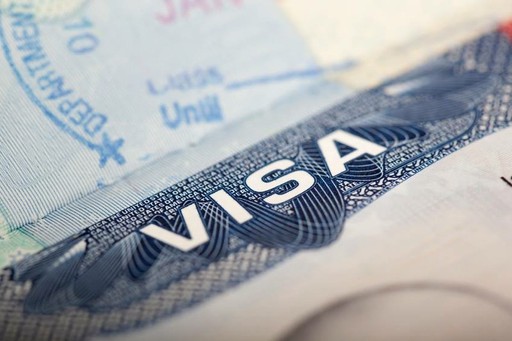project story
Supporting the Shift to Digital U.S. Visa with CX Strategy
Consular Affairs wanted to increase the efficiency of the U.S. Visa program and expand adoption of CX principles in the bureau.
As part of a broader systems modernization effort, the Department of State’s Bureau of Consular Affairs has been developing the capability to issue digital visas. Although Consular Affairs had done prior design work on the initiative, the CX lead at the bureau wanted to integrate customer research and service design intentionally into the process.
Our work was also intended to demonstrate how CX can improve outcomes for the business and customer goals.
To do customer research, we had to create the enabling conditions and stand up a research operation.
One of the team’s biggest challenges was conducting customer research efficiently. Consular Affairs hadn’t really done CX research before, so I helped the team stand up a number of practices—from completing Paperwork Reduction Act requirements, to building screeners, to setting up scheduling and tracking tools. Through this work we helped Consular Affairs get more familiar with CX and research, and informed the creation of standard operating procedures for research.

We canvased local universities to recruit student visa holders.
Establishing the point of view and boundaries of the visa holder experience was difficult, but it sparked the necessary conversations.
To help the team establish a basic understanding of the visa application process, I created a user flow and refined it through working sessions with the client. This helped the team establish a basic understanding of the existing visa process and laid the groundwork for our eventual service blueprint. As we moved through research and began to build the increasingly complicated service blueprint, I helped the team focus on the intended value of this artifact and adjust the design to meet those goals.
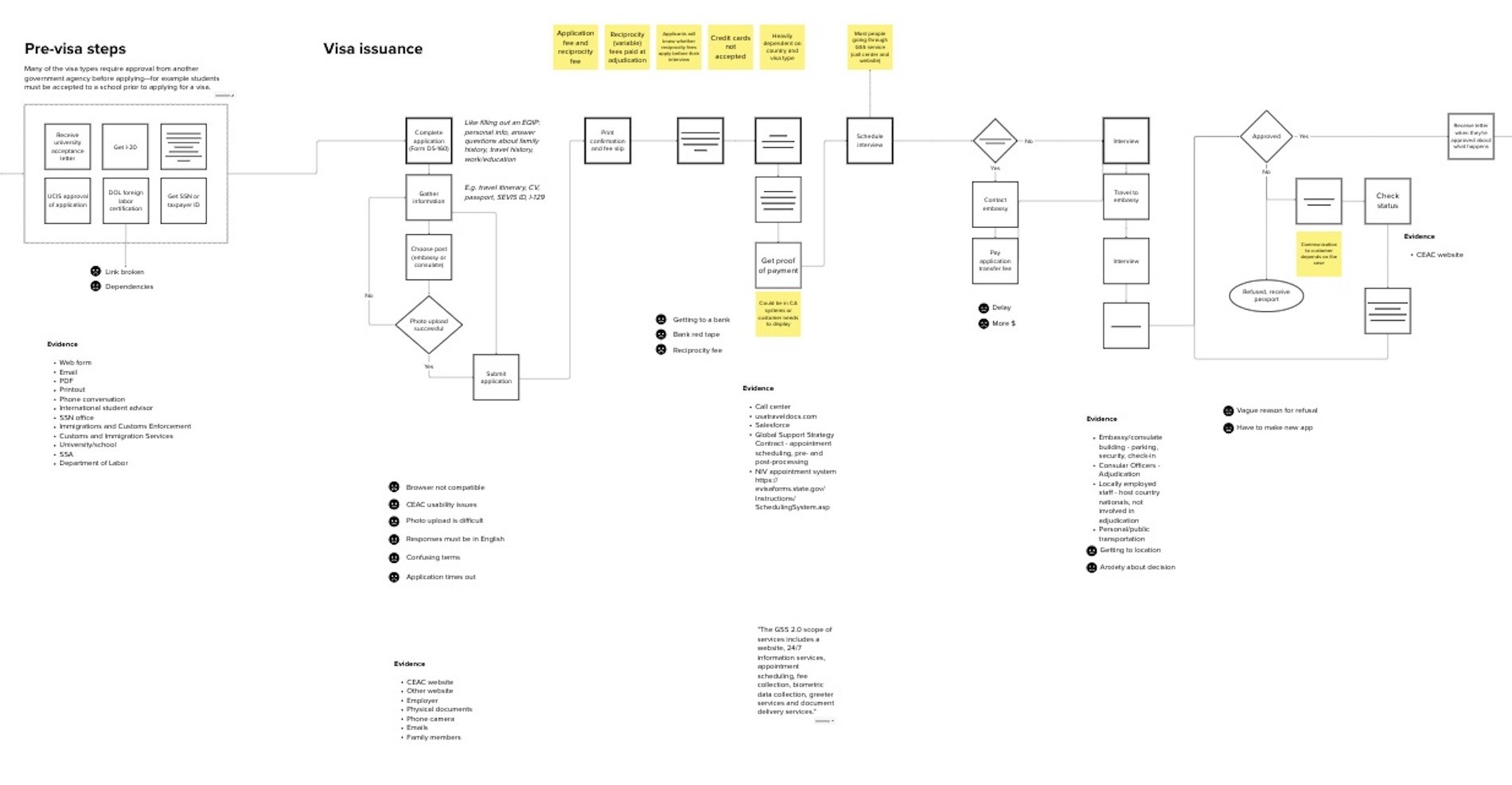
One of my first steps was to create a user flow of the existing U.S. Visa application process and validate it with the client.
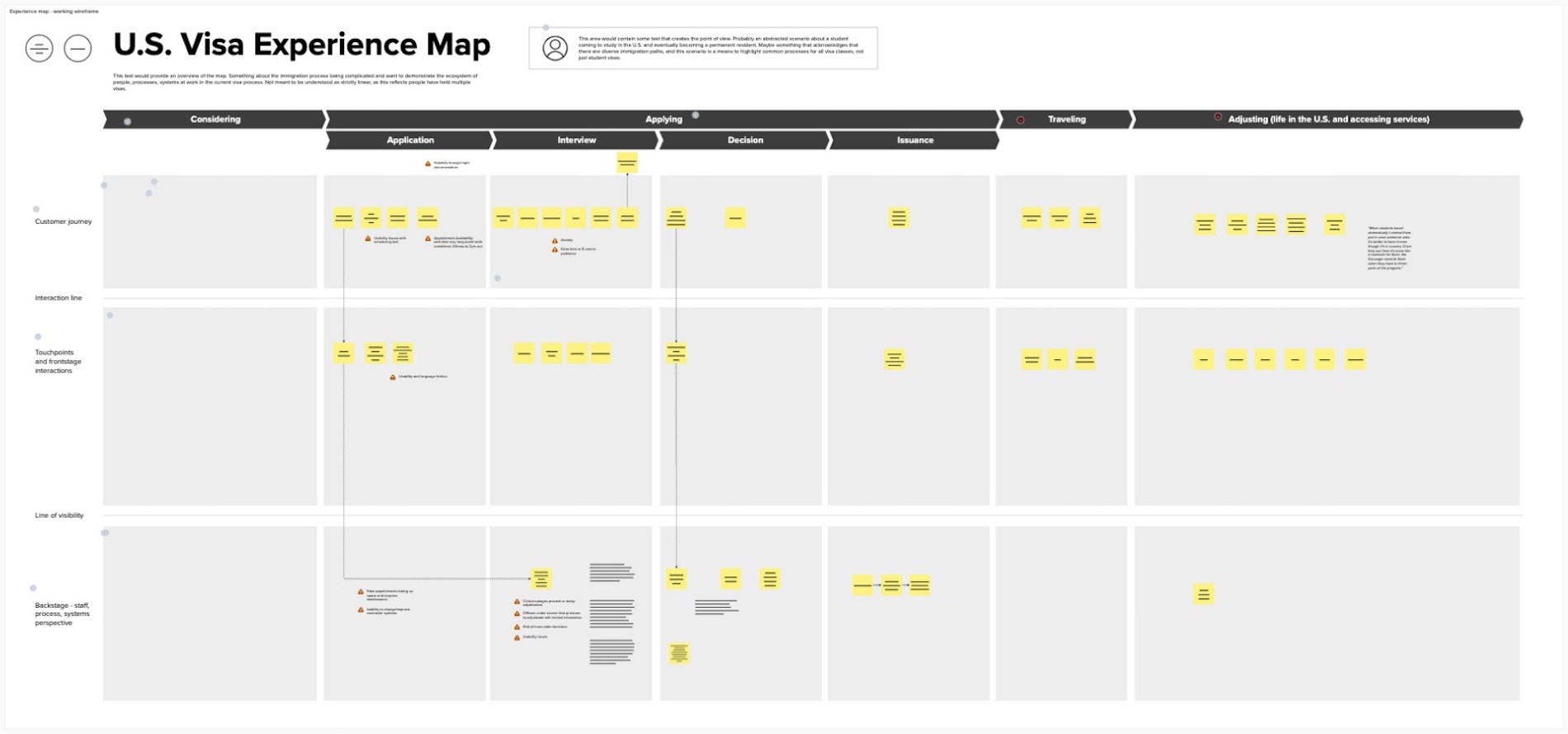
Work in progress service blueprint with process and dependencies starting to emerge.
It took some trial and error to engage effectively with subject matter experts.
The team proposed a series of workshops to engage Consular Affairs’ subject matter experts in our work. Getting participants to engage was tough, so after the second workshop I took some time to re-group with the team and think critically about the format of the workshops and what value we were providing to the participants.
I proposed scenario mapping for the next workshop, and that seemed to resonate with participants. But considering the amount of work needed to organize the workshops, ultimately we shifted to more ad hoc meetings and asked to be included in standing meetings.
I think this made us seem more approachable: we were no longer asking them to participate in these workshops that were outside their comfort zone, rather we were meeting them where they are and normalizing CX.
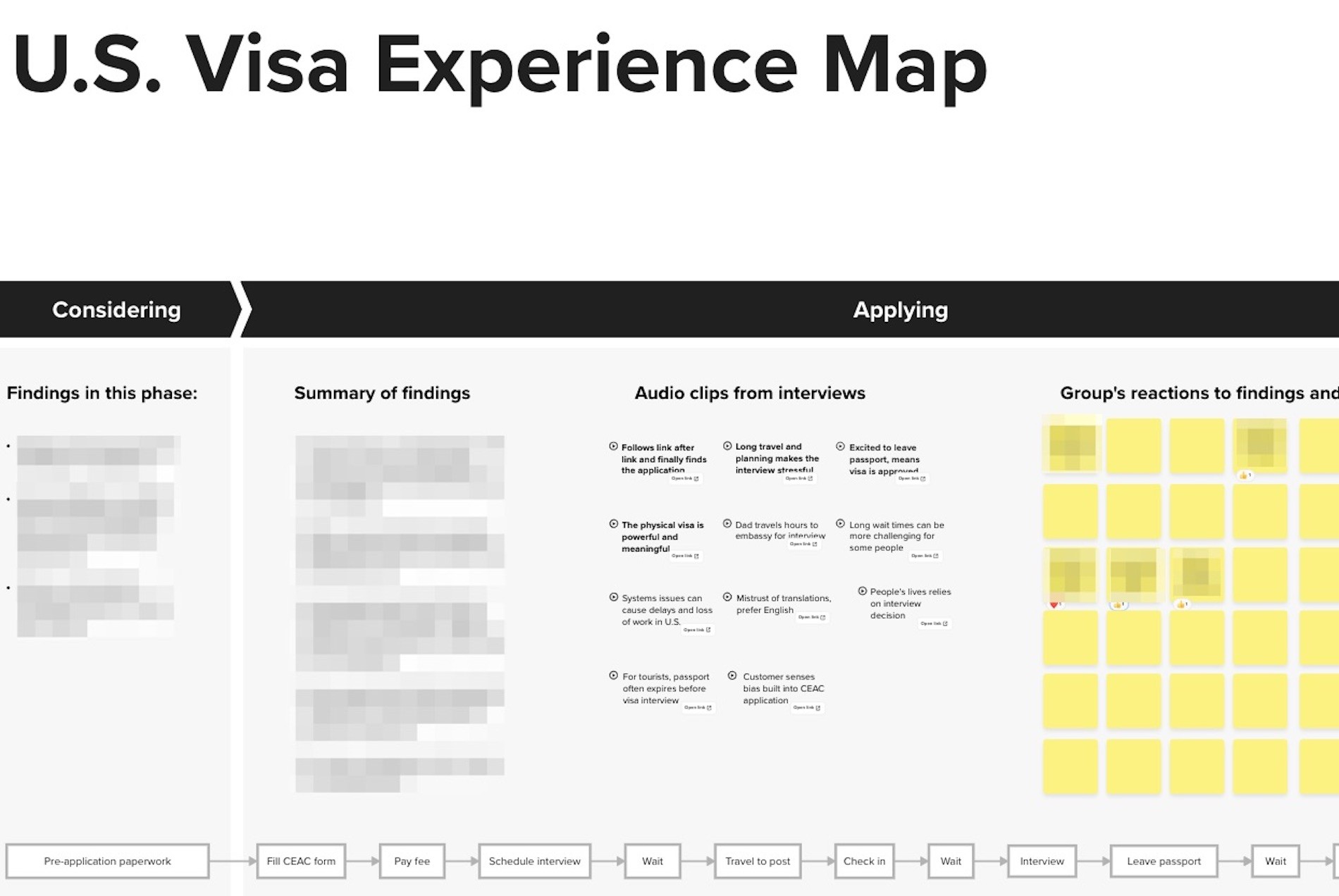
The second workshop focused on building empathy with customers by reviewing research findings and hearing customers' experiences in their own words.
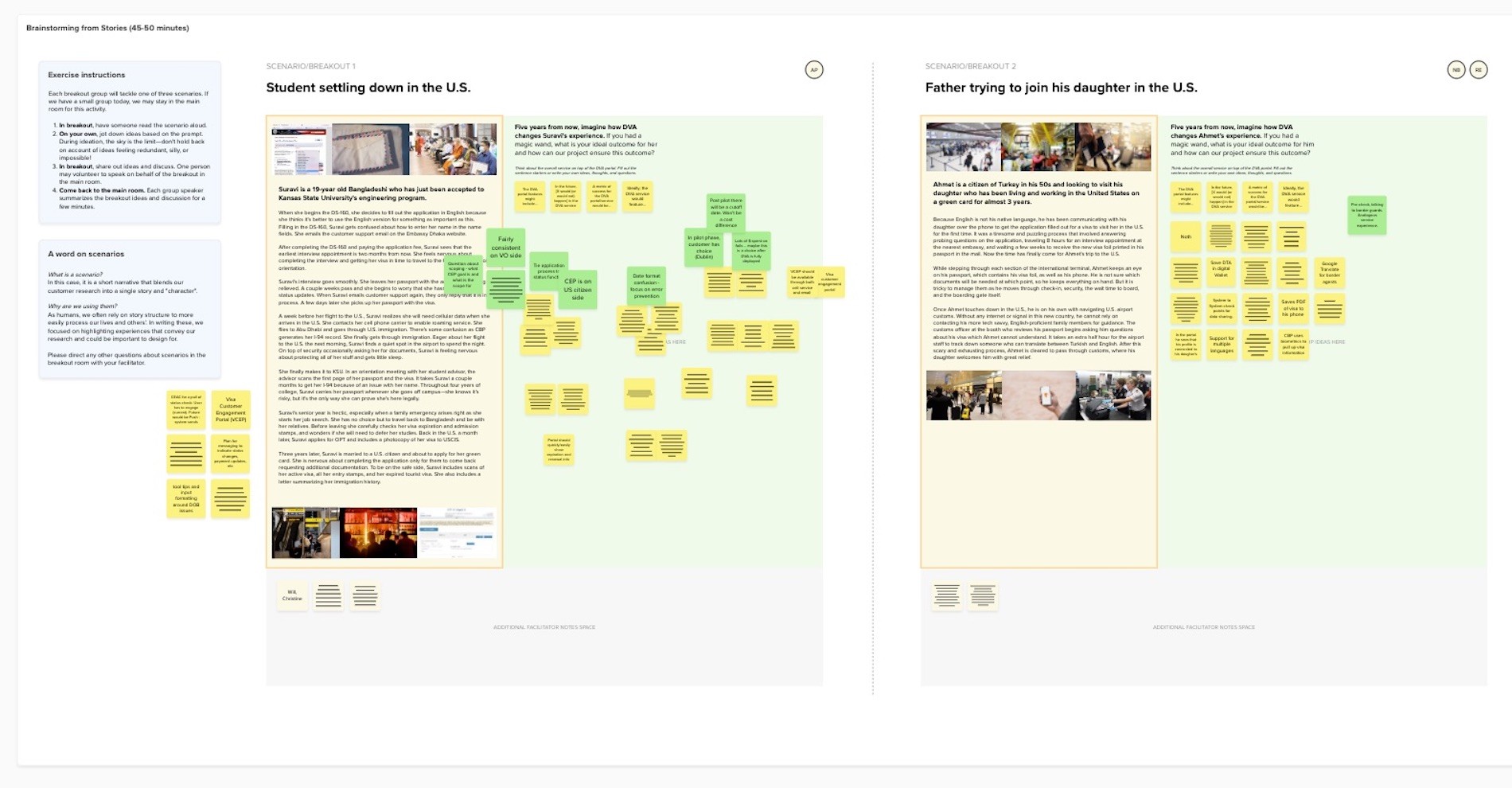
In the third workshop I used scenario mapping to communicate user research and prime solution thinking.
As we closed out the engagement I focused on designing for the future teams who would carry the initiative forward.
Since our team wouldn’t be the ones actually launching the new service experience, I focused on writing the final research report and recommendations for the eventual teams that would.
To address the decisions they would need to make—and ensure CX would be represented in that decision-making—I developed recommendations using guidance from OMB 23-22, the guidance on how federal agencies should implement principles of the 21st Century Integrated Digital Experiences Act.

I led the team through the creation of product principles based on guidance from the 21st Century Integrated Digital Experience Act.
The real impact was not what the team produced, but how we did it.
The team finished out the project strong and delivered several artifacts to guide the development of the digital visa initiative. But the real value of our work was in how we did it—we engaged with Consular Affairs and demonstrated that CX and research can improve decision-making and create real value. In this way we planted the seeds for CX at Consular Affairs and helped to create advocates within the organization.

Our work increased the organizational appetite by showing how CX and research improve decision-making and create real strategic value.

Our customer research directly informed an important decision about one of Consular Affairs' visa systems.
